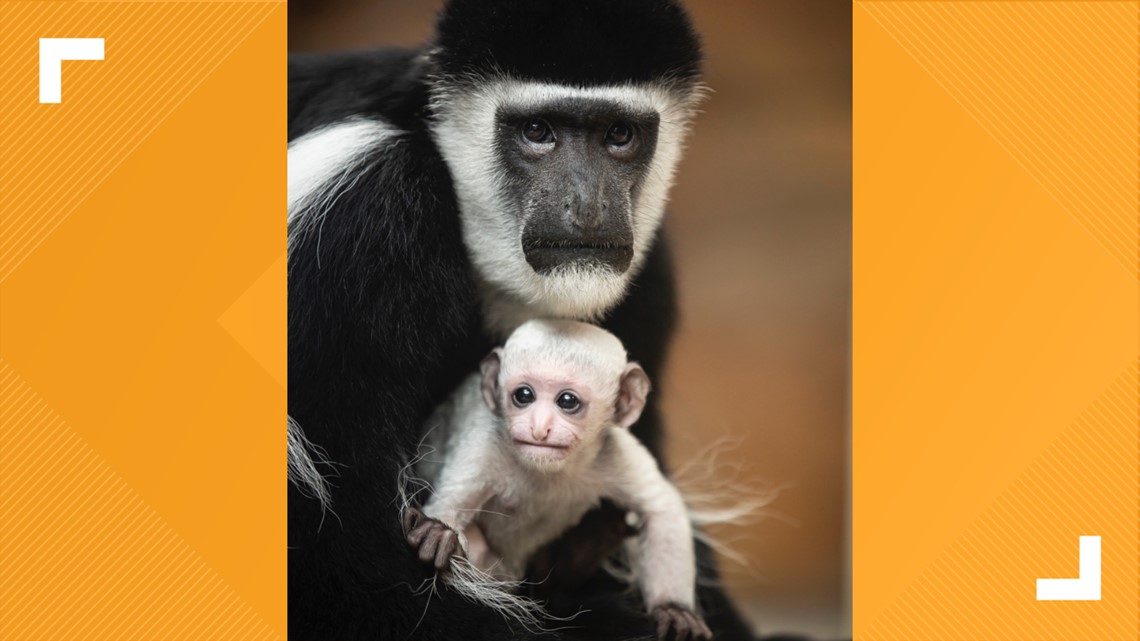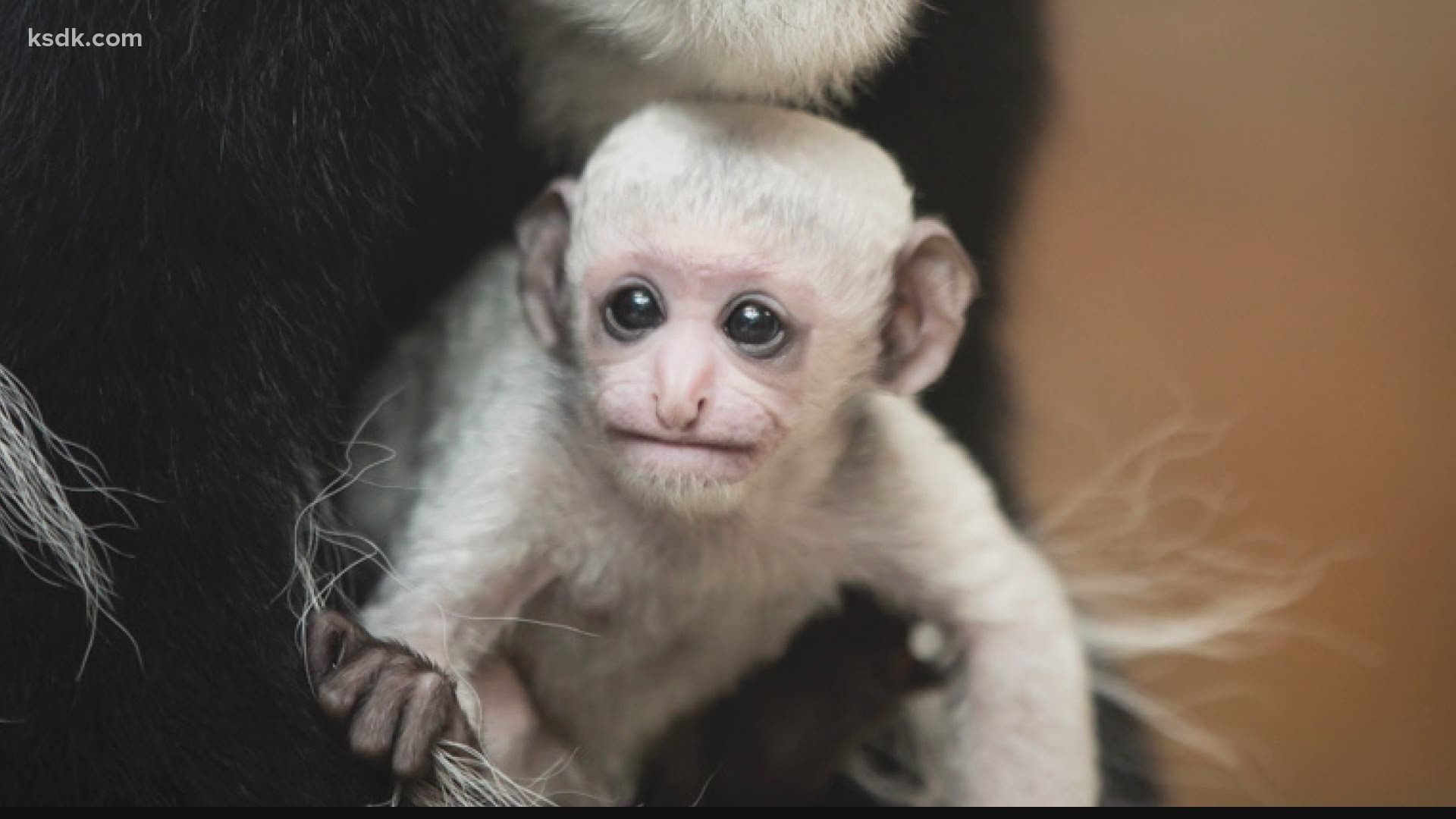ST. LOUIS — A female Guereza colobus monkey was born at the Saint Louis Zoo in April.
The baby monkey named Juniper was born on April 8 and can be seen with her family at the Primate House. The zoo said the name continues a theme of tree-related names that Juniper shares with her siblings Willow, Hawthorn and Teak.
The birth is part of the Association of Zoos and Aquariums Colobus Species Survival Plan, which is a conservation breeding program to manage a genetically healthy population of Guereza colobus monkeys in North American zoos. Since 2011, there have been 10 successful colobus births at St. Louis' zoo.
Colobus mom Cecelia, 21, is the dominant female in the group of four males and four females, the zoo said in a news release. Juniper will stay with mom for nursing and sleeping but all of the females in a colobus family take turns holding and carrying the infant when mom is eating or socializing. The father, 15-year-old Kima, can be seen watching over his family.


“The new baby adds so much to the dynamics of the colobus group,” primate keeper John Velasco, said in the release. “One-year-old Teak, previously the youngest in the group, is gaining more independence from the comfort of his mother, Cecelia, now that she’s also caring for an infant. The others in the group are learning how to care for a baby, as they mimic behaviors of mom and older female siblings, Binti and Willow.”
Colobus monkeys are born with all white hair and a pink face. When they’re adults, they are primarily black with white hair around their faces, on half of their tails and along their shoulders and backs. A baby’s coat will change gradually until they reach adult coloration at 6 months old.
The Guereza colobus monkey can be found throughout the forests of central Africa. Although abundant in the wild, the species is increasingly threatened by deforestation for timber and loss of habitat to plantations and agricultural land as well as illegal hunting. The zoo said people can help protect the colobus monkey and other wildlife by reducing, reusing and recycling.
For more information about colobus monkeys, visit the Saint Louis Zoo website.

